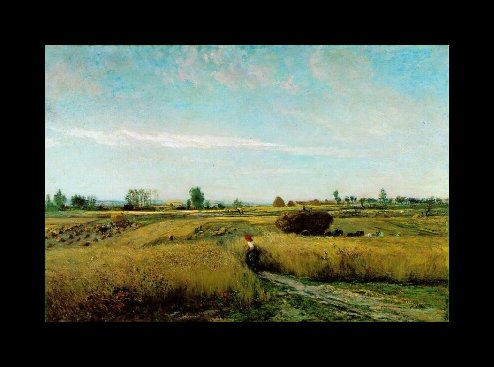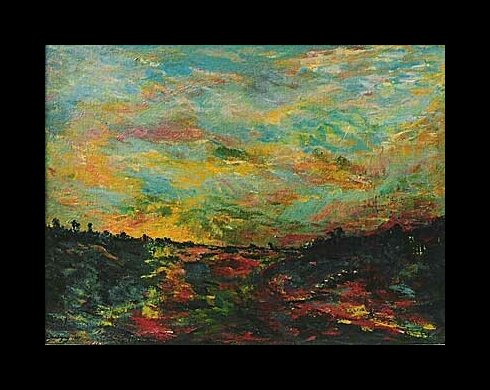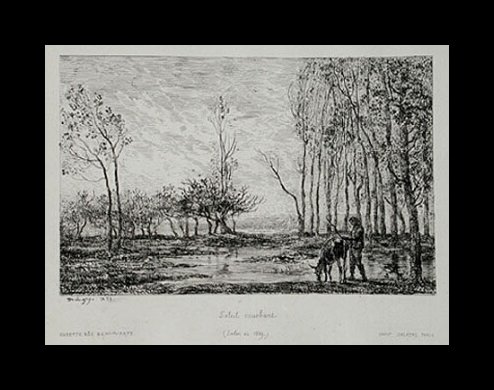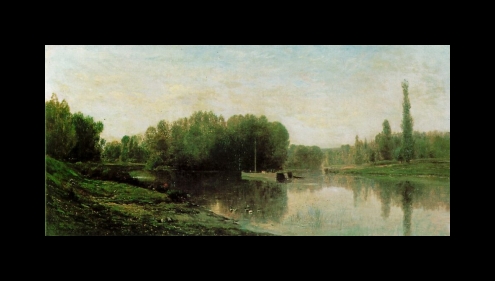Charles-Francois Daubigny (1817-1878)
Get a Daubigny Certificate of Authenticity for your painting (COA) for your Daubigny drawing.
For all your Daubigny artworks you need a Certificate of Authenticity (COA) in order to sell, to insure or to donate for a tax deduction.
Getting a Daubigny Certificate of Authenticity (COA) is easy. Just send us photos and dimensions and tell us what you know about the origin or history of your Daubigny painting or drawing.
If you want to sell your Daubigny painting or drawing use our selling services. We offer Daubigny selling help, selling advice, private treaty sales and full brokerage.
We have been authenticating Daubigny and issuing certificates of authenticity since 2002. We are recognized Daubigny experts and Daubigny certified appraisers. We issue COAs and appraisals for all Daubigny artworks.
Our Daubigny paintings and drawings authentications are accepted and respected worldwide.
Each COA is backed by in-depth research and analysis authentication reports.
The Daubigny certificates of authenticity we issue are based on solid, reliable and fully referenced art investigations, authentication research, analytical work and forensic studies.
We are available to examine your Daubigny painting or drawing anywhere in the world.
You will generally receive your certificates of authenticity and authentication report within two weeks. Some complicated cases with difficult to research Daubigny paintings or drawings take longer.
Our clients include Daubigny collectors, investors, tax authorities, insurance adjusters, appraisers, valuers, auctioneers, Federal agencies and many law firms.
We perform Charles-Francois Daubigny art authentication. appraisal, certificates of authenticity (COA), analysis, research, scientific tests, full art authentications. We will help you sell your Charles-Francois Daubigny or we will sell it for you.
Charles-Francois Daubigny was the son of a classical landscape painter. He initially worked as the decorator of trinkets for a clockmaker, and then as a restorer of paintings at the Louvre. He began painting near the Forest of Fontainebleau in 1834, and was part of the Barbizon School. He had his first success in the Salon in 1837 and began exhibiting repeatedly after that.
He is one of the great landscape painters of the time and is held in as high esteem as Camille Corot. Initially he painted in a traditional style but this changed in 1834 when he met Camille Corot. This meeting was said to change his artistic life, as he was to be one of the major influences on him. He had considerable success in the Salon in the 1850’s and by 1859 he had collected three First Class medals. He was also awarded a major commission to decorate the Government office in the Louvre and in 1855 the French State bought a painting of his entitled, ‘Lock at Optevoz’ which now hangs in the Louvre. He was also made a Knight of the Legion of Honour.


It is said that he produced his finest paintings between the years of 1864 and 1874 when he produced carefully completed landscapes of trees and rivers. Apparently; if he was happy with the painting, he added ducks. If we look at a painting by Daubigny, in theory we should be able to work out what he thought of the quality of his painting by the number of ducks that are on the canvas! It is said that the riverscape scenery that he depicted was highly influential on the paintings that Monet produced during his time at Vetheuil, a small village by the Seine. He was also a talented etcher at a time when this art was experiencing a revival and contributed a large number of etchings to the Gazette des Beaux Arts.
Aside from the etchings he also produced illustrations for advertisements, romantic novels and religious publications. These regular commissions were an ‘insurance policy’ against the uncertainty of relying on the sale of his paintings as the source of a steady stream of income.
In 1857 Daubigny launched his floating studio in a boat that he called ‘Botin.’ From the boat he recorded the landscapes along the Seine, Marne and Oise rivers under varying atmospheric effects. He was to settle in Auvers-sur Oise, its lush green valleys were a favourite spot for nature lovers. Friends such as Cezanne, Corot and Berthe Morisot spent holidays there with him whilst painting at the same time. He is quoted as saying ‘The best paintings never sell.’ It seemed that the paintings he thought worthy of the most admiration were never the ones that people bought.



In 1890 Van Gogh who was a great admirer of Daubigny went to Auvers-sur -Oise and he painted on a number of occasions the garden to the house in which he lived.
He liked to travel and traveled to London where he met Whistler and traveled to the Netherlands with Monet. Daubigny had a great influence on the Impressionists and on Monet in particular.
Daubigny later became a Salon jurist and in 1870 when Monet’s paintings were turned down, both him and Camille Corot resigned in protest.
Daubigny’s paintings were actively collected by several Bostonians, so it is possible that there are some forgotten paintings in America. The value of his paintings and other works such as his etchings varies enormously and they have been sold for amounts ranging from $2,000 to nearly $120,000. As one of France’s most reputable landscape painters, his paintings are certainly in demand.
If you believe you own a work of art by Daubigny, contact Art Certification Experts. We authenticate, appraise, research and provide Certificates of Authenticity (COA's) for works by Daubigny.

Reviews
1,217 global ratings
5 Star
4 Star
3 Star
2 Star
1 Star
Your evaluation is very important to us. Thank you.
